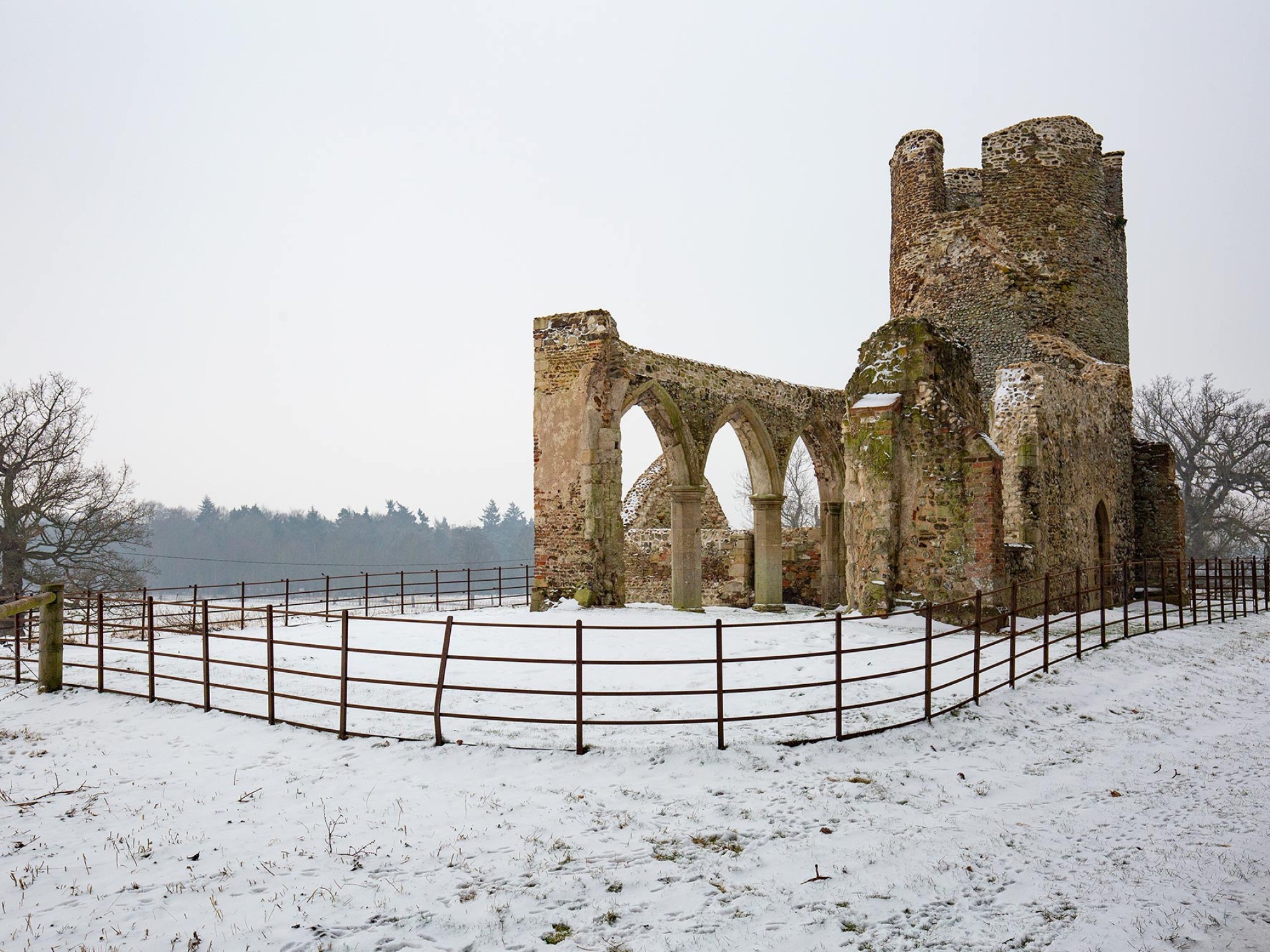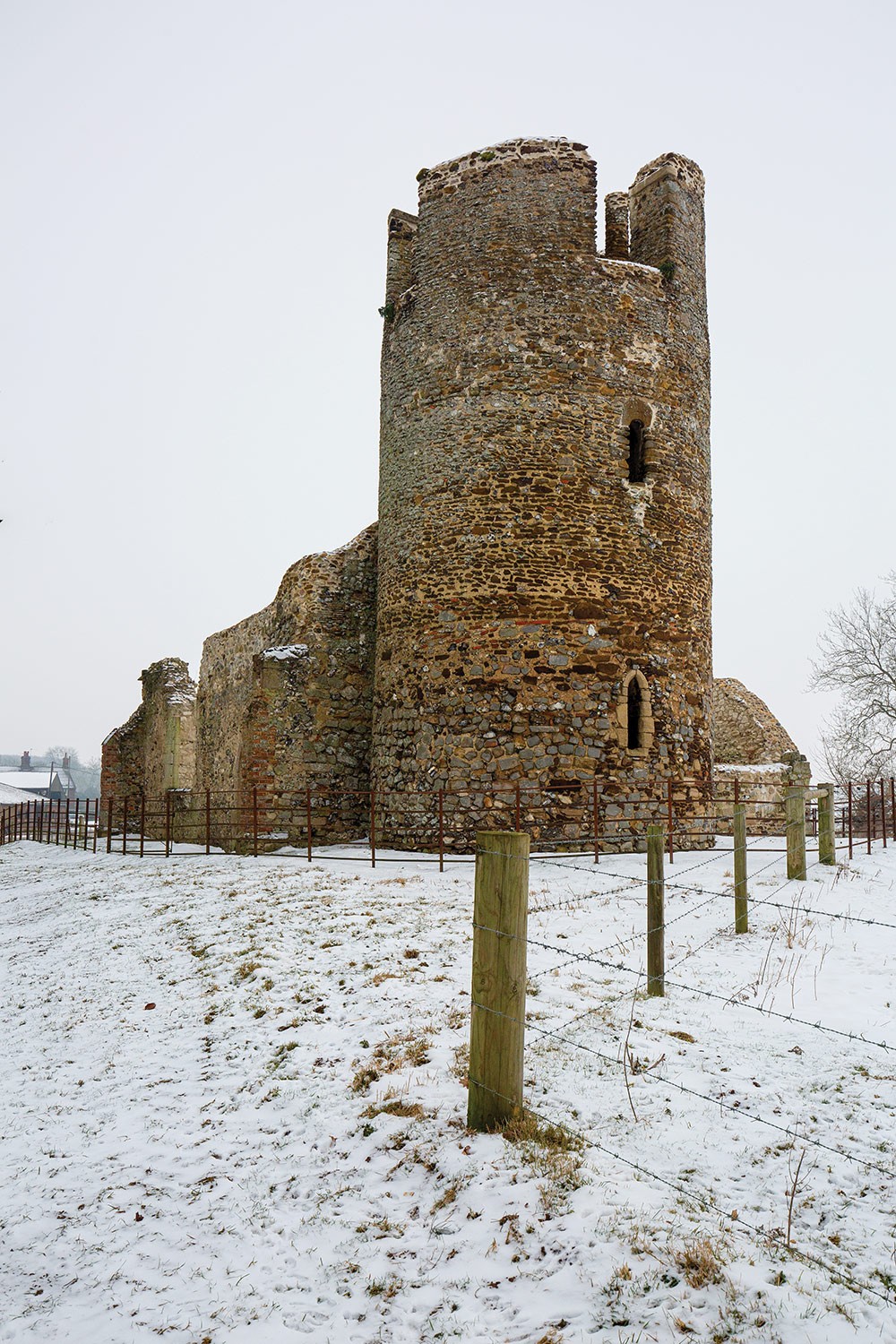
The very last traces of Appleton’s long history
Sitting unobtrusively on the outskirts of Sandringham, the ruins of St. Mary the Virgin are all that remain of a church that once served local communities over the span of 600 years
Travelling along the B1440 to Sandringham isn’t a particularly memorable route, apart from the stretching fields and the sprinkling of snowdrops we’re waiting to see again in the spring. In fact, you may not even know you’ve driven through Appleton - the small sign for ‘Appleton Farm’ at the side of the quiet crossroads is easy to miss, after all.
But perhaps you’re able to spot a modest round tower through the trees, some 500 feet from the main road. Welcome to St. Mary’s church, which was once the beating heart of Appleton.
It’s likely the church was constructed in the 10th century, since the Domesday Book tells us that in 1086 Appleton was under the ownership of the Norman knight Roger Bigod, by which time the church was already built - in addition to a hall surrounded by a moat to the southeast. There was a population of 27 households, with 20 smallholders working the fields.
The foundation of St. Mary’s is actually quite unique. Parts of it were built with stone from Sandringham, also known as silver carrstone, which is rarer than the darker ‘gingerbread’ carrstone that can be seen in many towns like Downham Market, as well as in Hunstanton’s cliffs.
In 1571 Sir Clement Paston came into possession of the hall, a distinguished figure who Henry VIII called ‘his champion’ - and whose family gave us the famous ‘Paston Letters’, an extraordinary collection of over 1,000 messages written between 1422-1509 that give us a detailed insight into what life was like in the Middle Ages. For the gentry at least.
It was then, in the midst of the Elizabeth era that Appleton Hall is thought to have served as a base for illicit activity...
The Pastons rose from peasantry to aristocracy within a few generations, and their personal and societal struggles were intimately recorded by various family members. Love letters between couples in arranged marriages, notes from Agnes Paston to her son complaining about their neighbours, several cases of imprisonment, and the oldest surviving Valentine’s Day greeting barely scratch the surface of the collection.
Sir Clement Paston was a Naval commander under three monarchs - Henry VIII, Mary I and Elizabeth I. His reputation grew with every battle he fought in, and his loyalty earned him enough wealth to retire comfortably to the Norfolk countryside.
He enjoyed the quaint Appleton Hall with his wife Alice for some years, although he would later build the much larger Oxnead Hall north of Norwich, where he’d spend the remainder of his days until his death in 1598.
It was then, in the midst of the Elizabethan era, that Appleton Hall is thought to have served as a base for illicit activity.
Edward Paston, nephew to Clement, had inherited the manor. The population within the farmsteads and households had already fallen over the centuries, which benefited Edward’s interests enormously.
He was godson to King Edward VI, grew up in the Tudor court and became a popular poet and amateur musician. He was also Catholic - at a time when a Protestant-raised queen was on the throne.
Elizabeth I was initially tolerant of the opposing religion, only asking that Catholics worship in private and remain loyal to her. Tensions rose over the years, though, leading to revolts in the north of England and a Papal Bull being issued from Rome that criticised Elizabeth and called her wicked.
Alongside the ever-increasing threat from the Spanish, it all led to an Act of Parliament ordering that every Catholic priest in the country should be driven from the kingdom.
Future recusancy laws under James I ordered that the ‘recusant’ in question be fined £60 or forfeit two-thirds of their land if they remained loyal to the Pope and the Roman Catholic church.

All this political and religious upheaval meant that Edward Paston couldn’t profess his faith, so he did what other Catholic gentry were doing - keeping a ‘mass-centre’ in a house in the woods about a mile from Appleton Hall. When his niece came to live at Appleton at the start of the 17th century, she gave an account of what she saw:
“It happened one day that the pursuivants came on a sudden and were kept in talk at the door sometime,” she wrote, “whilst the priest and church stuff were put up safe into the secret place, so that coming in they found nothing.”
The hall was a refuge for many like Edward, although they couldn’t use the Church of St. Mary for fear of being discovered. Even by this time, though, the church was in disrepair. The steeple is reported to have decayed, and there were no sufficient ornaments for services.
The reason there’s no trace of Appleton Hall today is thanks to a devastating fire that broke out in 1707. It destroyed the Pastons’ home and they never returned - by that time Edward Paston had built a new hall in Barnigham, which can still be seen to this day.
Sadly, the church was left to decay, and it’s only thanks to conservation projects in 2008 and 2016 that we can appreciate what remains of a settlement that has been home to knights, naval captains, poets, and treasonous dissenters.
